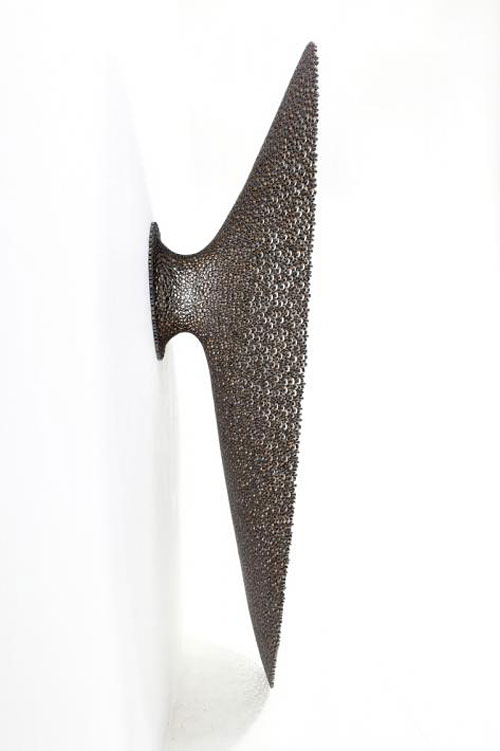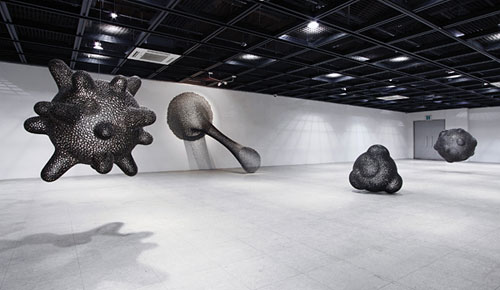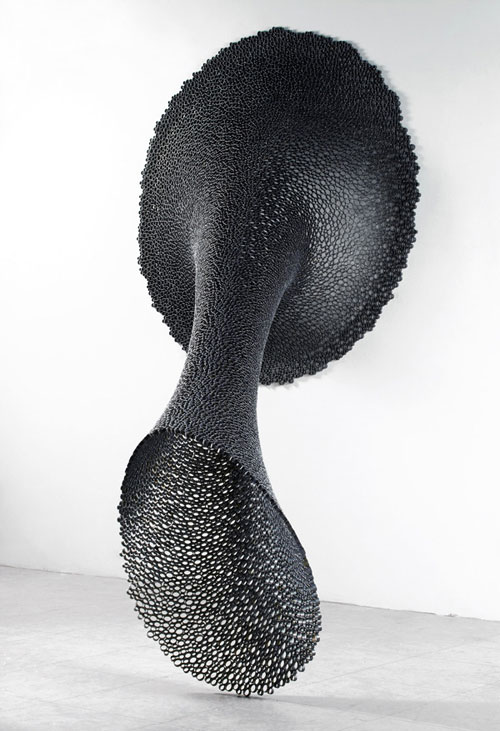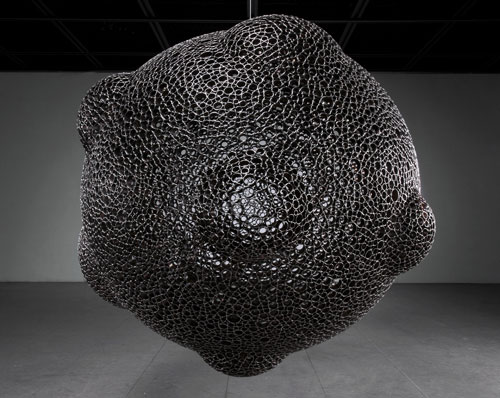
Dark matter1203 - scorched stainless steel 274×203×58cm 2012
'The cross-section of pipes looks like a single cell structure; the arrangement of the pipes is lively and vivid, like a wriggly living structure, as if it were about to come to life'. This is the artist statement, or confession, you may say, on how the origin and conception of his works evolved, and I believe it is the clue to lead us to better understanding of Jang's world. In fact, the cross-section of the compiled pipes might first remind us of single-cell organisms; this first impression is arbitrary and artificial (in a creative way), derived by Jang's interpretation, but not because these features are inherent in the material itself (pipes). Jang captured this motif by capturing the external similarity in forms. For the artist, the conception is very concrete.

Jang regards the cross-section of pipes with the cells in the same light as the arrangements of pipes as an organic being. The cross-sections, having been put together, produce a kind of arrangement (and pattern), the individual cells constitute and eventually produce a lively being. Along with the formal similarity, there is an analogical reasoning process that regards the real and imagined in the same light. The way of putting together the cross-sections of pipes and the notion that the individual cell is the essential building block of a life form are the quintessential and substantial skeleton concepts of his works. Based on all of these, we can glimpse Jang's interests in and ideas toward vitality. This was made possible because Jang continuously pursued his interest in life on a daily basis, so some things that might easily be overlooked or acquiesced to were not left neglected despite seeming incidental.

Dark matter - scorched steel 264×240×189cm 2010

Particle 431022 1 - steel 100×100×100cm 2009
In an analysis of Jang's sculptures from the aspect of external features, overall, the shapes of his sculptures could be described as simple forms that remind the viewer of cell nuclei or protoplasmic matrices. In this regard, Jang's works resonate a strong vitality as if they might immediately go through cell divisions and expand into a further unknown dimension. Jang's finished works clearly show that the figures are not end products in themselves, but are instead in a constantly changeable status as if they might instantly expand or shrink. This implied mobility or fluidity is the essence of Jang's vitalism sculpture, and makes his work different from previous vitalism sculptures that simply offer organic features through the manipulation of materials, urging the audience to rely on his or her own persistent imagination to further fully understand the work.
Jang Yong Sun









